Eco-sensitive methods in Inner Mongolia protecting environment, providing higher-quality meat
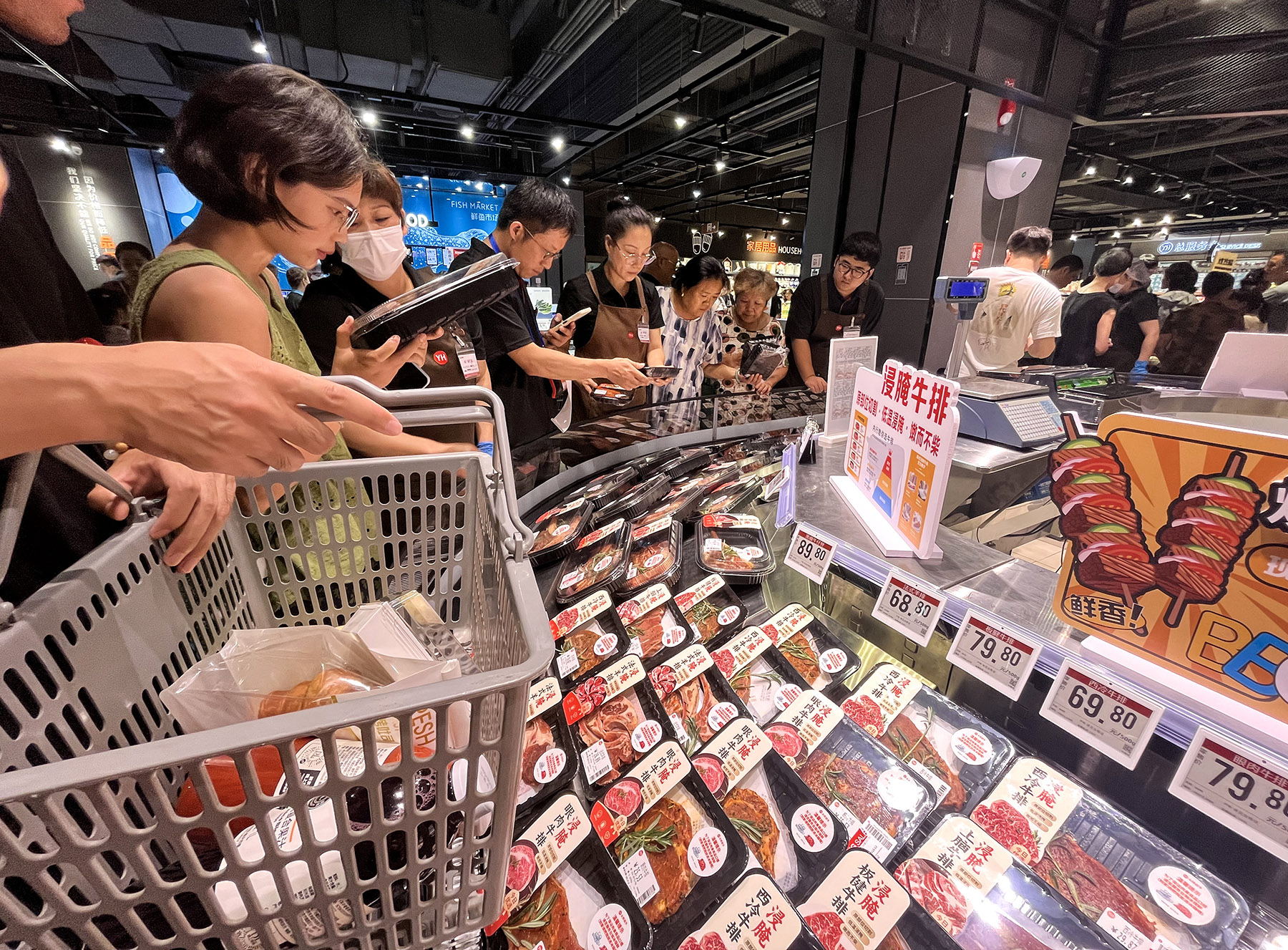
On the vast Ulgai Grassland of the northern Inner Mongolia autonomous region, Dong Xiaohu begins his day well before sunrise.
At 3:30 in the morning, he rises in the semi-darkness, quickly drinks a cup of milk tea, and sets off on horseback to check on his herd of 500 Angus cattle.
"Summer days are long here," he explained. "If you don't get the cows out grazing early, they stop eating once the heat sets in around 9 am."
At 43, Dong has spent over a decade in modern cattle farming, a livelihood he never imagined when he was a young migrant worker moving between factories in the northeastern provinces of Jilin, Heilongjiang, and Liaoning.
READ MORE: Agricultural challenges to be addressed
In 2013, Dong returned to Inner Mongolia and began working for a livestock company, trading urban transience for the peacefulness of the grasslands.
Life on the boundless grasslands is beautiful yet lonely, and he has found solace in the company of his cattle.
As he got the hang of setting up warm bedding for calving cows, monitoring their feed intake and pregnancy conditions, and watching for illnesses like pneumonia, he has managed to deliver quality cattle. Over the years, his income has grown steadily to about 200,000 yuan ($27,860) annually.
"It's simple. If you take care of the cows — make sure they eat right, stay warm, and don't get sick — they grow fast and strong. Then the company pays you well," he said.
Unique strengths
Dong is among more than 3,000 local herdsmen whose lives have been transformed by modern cattle farming since Zhang Wen entered the scene.
Through a system of contract management plus performance pay, a herdsman can now earn between 120,000 and 180,000 yuan a year, lifting their families out of poverty, said Zhang, who runs the Inner Mongolia Hesige Agriculture and Animal Husbandry Technology Co in Xiliin Gol League.
Approximately 98 percent of farmers and herders his company now employs are ethnic Mongolians who used to come from lowincome households.
In 2007, Zhang arrived at the Ulgai Grassland, northeast of Xiliin Gol League, where the grassland coverage is one of the biggest in the world.
At the time, decades of overgrazing had left vast areas barren, with dark sand exposed where grass once thrived, said Zhang, aged in his 70s, and born and bred on the grassland. "Growing up on the grasslands gives you a deep sensitivity to ecological damage," Zhang said.
When he officially took over 400,000 mu (26,666 hectares) of pasture in 2008, his first decision was a bold one.
"We closed off the land for six years, allowing vegetation to recover undisturbed," he said.
What was once a degraded expanse, has returned to a vibrant green area. After multiple study trips abroad, Zhang settled on large-scale breeding of Angus cattle, a breed prized globally for its adaptability and premium marbled beef.
He believes the natural grasslands have unique strengths in developing animal husbandry.
"Our pastures are not just grass, but home to over 100 native plant species, many of which are traditional Chinese medicinal herbs," Zhang said.
These plants, he said, act as natural supplements for the cattle, strengthening their immunity and reducing the need for antibiotics.
From the outset, Zhang intended to cultivate a homegrown system that fits the country's ecology, and the Chinese palate and consumption patterns.
He insists that cattle fare better when being raised free-range rather than confined. "People aren't happy when walled in — neither are cows," Zhang said, adding that allowing the herds to roam on the grasslands promotes animal welfare and reduces disease.
To maintain herd health, his team has imported high-quality vaccines and enforced strict biosecurity, practicing antibiotic-free farming.
Additionally, Zhang has kept the scale of farming in check. He only raises just over 10,000 head of cattle to ease grazing pressure on the grasslands.
He also has his team grow corn and oats on cropland, combining planting and grazing cycles to protect the fragile steppe. "It ensures the land's sustainability and long-term strength of our farming business," Zhang said.
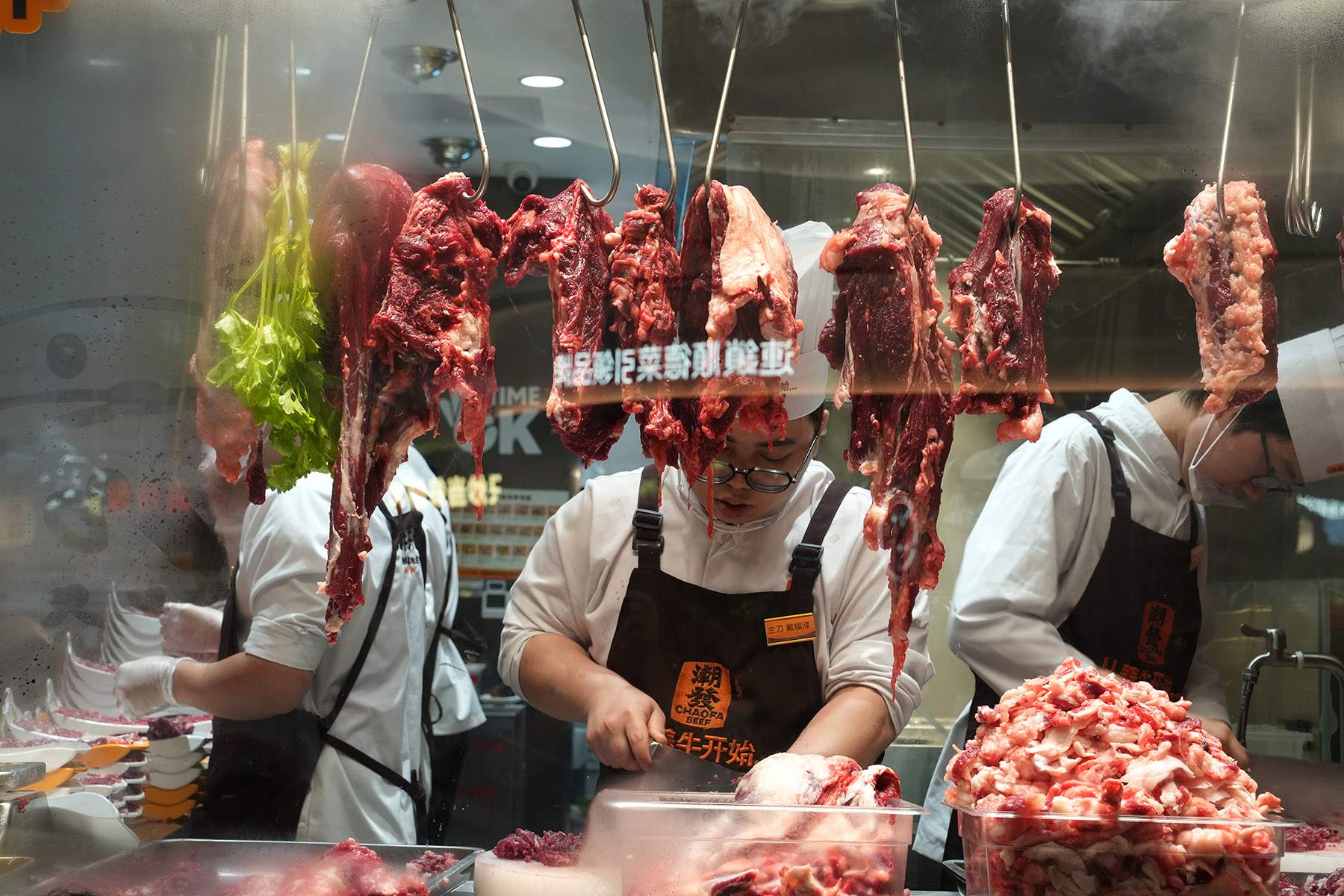
Supply chain needs
It didn't take long before Zhang's vision of restoring the steppe's natural vitality and taking high-quality Chinese beef to dinner tables nationwide attracted other key players across the supply chain.
Zheng Jian, founder of Zuoting Youyuan, one of China's fresh beef hotpot chains, came on the scene about five years ago. "Most people think raising cattle is just the herdsmen's business, but behind every cow is a long, intricate supply chain," Zheng said.
For over a decade, Zheng worked to bring fresh beef hotpot, once a niche regional cuisine in Chaozhou, Guangdong province, to diners across the country. But as his brand expanded to more than 80 restaurants nationwide, he came to a sobering realization that winning over health-conscious Chinese consumers required uncompromising freshness and quality at every step, from pasture to plate.
"Our customers equate freshness with health. They want to see for themselves that the beef is freshly raised and locally sourced," Zheng said.
To achieve this, his hotpot business has built a vertically integrated system with Zhang's operations, featuring company-owned pastures, in-house slaughterhouses, dedicated cold-chain logistics, and strict quality standards.
For Zheng, Zhang's Angus cattle are not just a supply source but a cornerstone for branding premium fresh beef as China's answer to imported frozen cuts.
"Fresh beef is the only way for Chinese cattle farming to break out," Zheng said.
Cold storage puts local producers in direct competition with imported meat — a battle they're unlikely to win. But freshness, he believes, is an advantage that appeals to culinary tradition of valuing just-slaughtered, just-cooked food.
Liu Jinhuan, secretary-general of the beef and sheep industry branch of the China Meat Association, noted that tender, juicy, freshly cut beef has become a favorite on millions of Chinese dining tables and is reshaping the entire supply chain. In 2024, China's beef production reached 7.79 million metric tons, up 16 percent from 2020.Imports surged to 2.87 million tons, a 35 percent increase.
"Behind these figures lies not only an upgrade in consumer tastes, but also a critical opportunity for the beef industry," Liu said.
At the foundation of this transformation is a combination of supportive policies and technological breakthroughs, he added. In recent years, the government has rolled out subsidies and breeding incentives to promote large-scale modern livestock farming. This has enhanced efficiency and stabilized beef supply and quality.
At the same time, technological innovations are changing the game. Advanced processing techniques are producing finer, more tender beef textures, while rapid cold-chain logistics ensure that beef stays fresh even after traveling thousands of kilometers, he said.
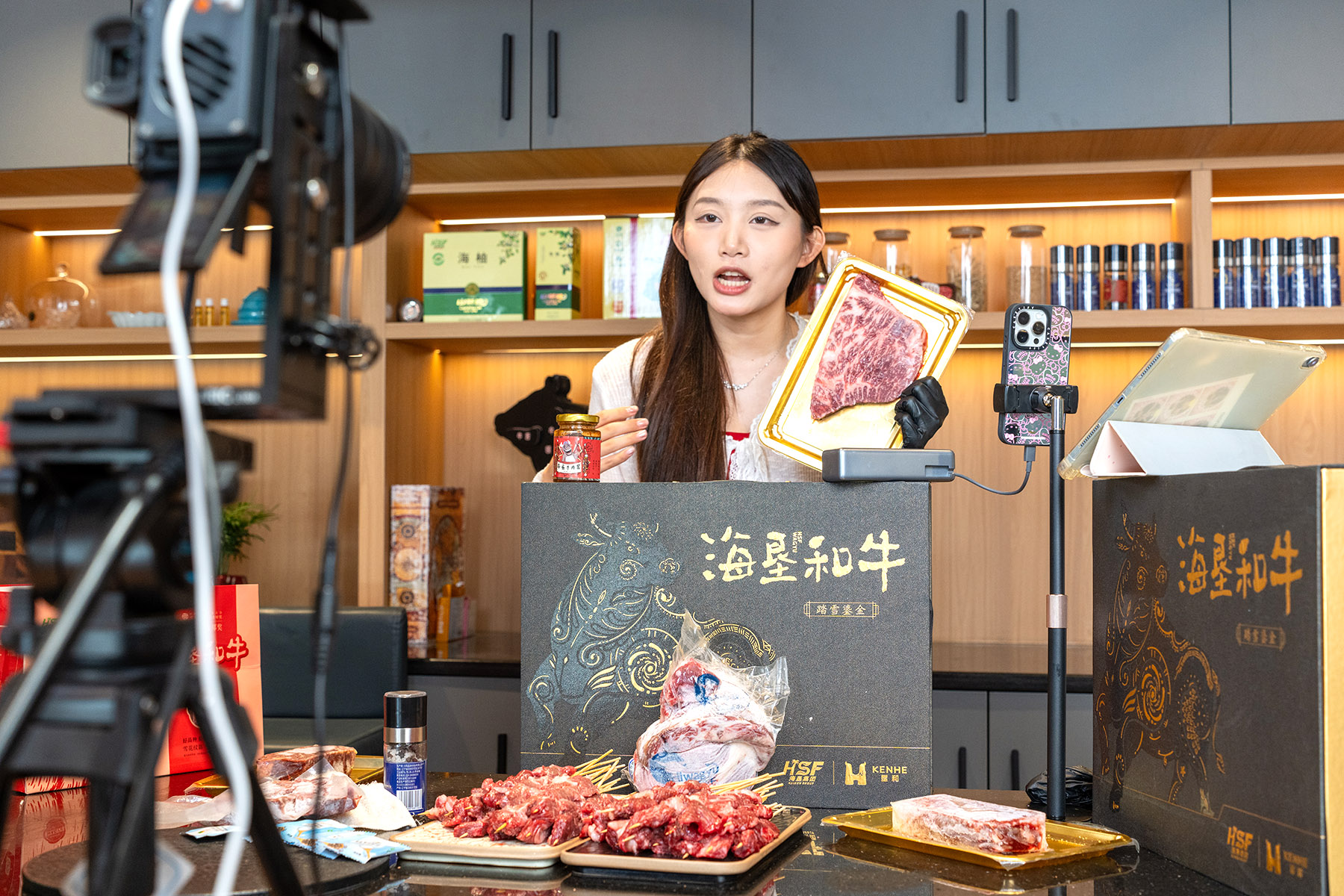
Maintaining quality
Liu believes consumers today are not content with standard beef cuts.
As incomes rise, demand has diversified into ready-to-cook meals, premium beef sets, and even functional beef-based health products to improve immunity, aid digestion, or support muscle recovery.
This shift is opening new opportunities for businesses to expand and innovate, while also pushing companies to move up the value chain, he said.
Jiang Lumin, supply chain director at Zuoting Youyuan, said once cattle are ready for market, they are transported 2,200 kilometers to company-owned slaughterhouses in Beijing and eastern Zhejiang province's Huzhou and supply outlets in Shanghai and Jiangsu province. "We require that each transport is completed within 24 hours," Jiang said.
However, Liu cautioned that producing fresh beef for market is not an easy undertaking.
At the farm stage, volatile feed prices, stricter environmental rules, and the ongoing battle against animal diseases are squeezing profit margins, he said.
In processing and logistics, maintaining strict quality control and minimizing spoilage are constant challenges. At the market end, rising competition from a wave of new players means companies must carve out clear differentiation and build stronger consumer loyalty.
"This is an era of both opportunity and challenge," Liu said.
For China's beef industry to stand out globally, he believes a focus on freshness is key, but success will require more than policies and technology. "Enterprises must take consumer needs as their compass, dig deeper into quality, strengthen service, and lead with innovation," he said.
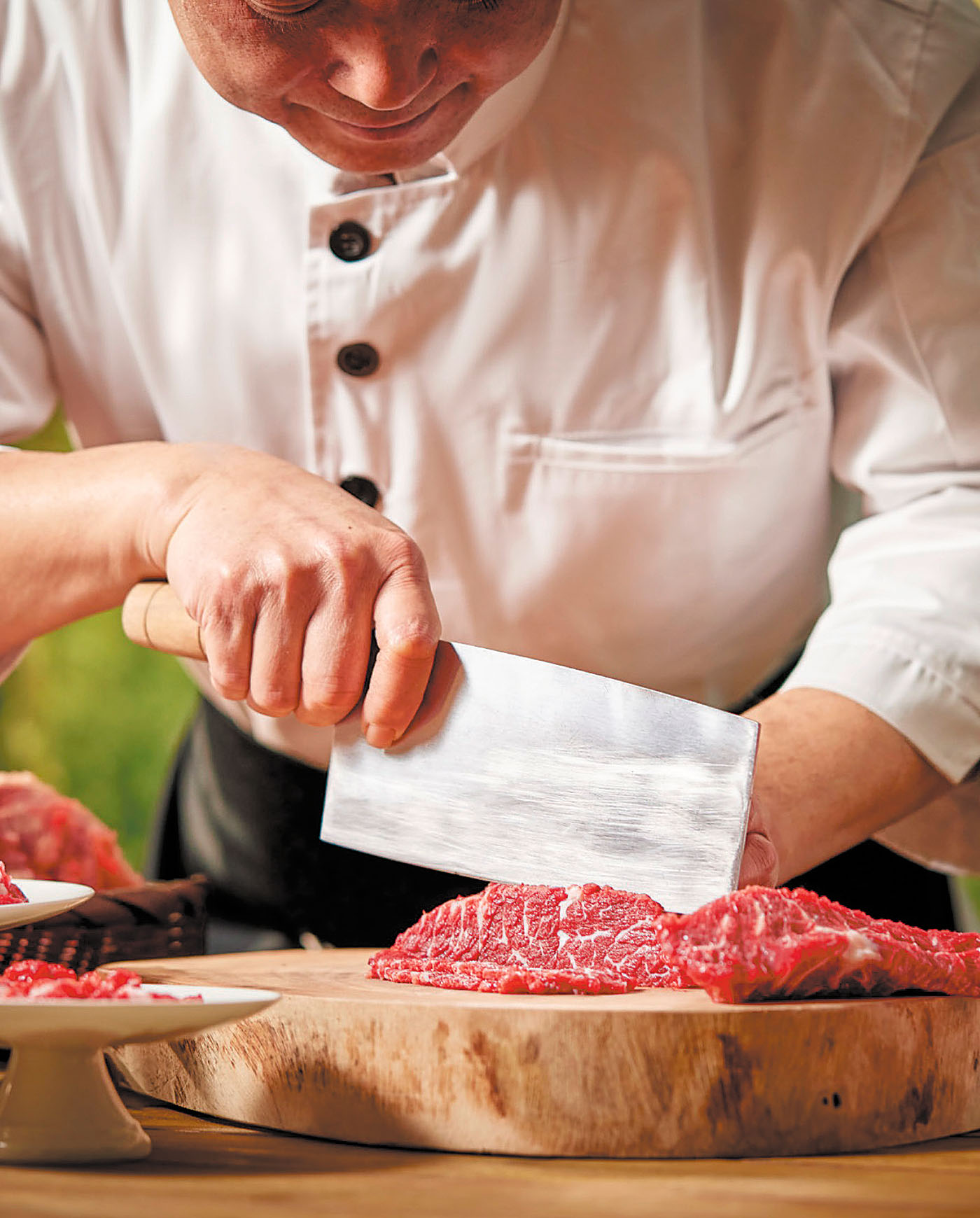
Jiang admitted challenges remain, as Angus beef, priced higher than ordinary beef, still caters to a niche market in China. "Angus requires us to educate consumers about its value and use our supply chain strength to open the untapped market," she said.
Online fresh grocery platforms like Dingdong Maicai have also noticed the growing appetite of Chinese consumers for fresh, high-quality beef and are joining the supply chain.
"Antibiotic-free beef needs to move beyond being simply 'traceable' to something consumers can truly feel," Shen Hao, product development specialist at Dingdong Maicai, said at a recent meat industry forum in Xiliin Gol League.
In 2024, the platform saw fresh beef sales climb by 150 million yuan, with domestic beef sales alone up more than 60 percent year-on-year, according to Shen. By early 2025, domestic beef volumes continued to grow, rising over 50 percent compared with the previous year.
"As health and food safety become more important to consumers, antibiotic-free beef is no longer just a product label but the foundation of trust," Shen said.
Dingdong Maicai introduced a platform-wide upgrade for antibiotic-free Angus beef in May, a move Shen described as "another step forward in pursuit of excellence".
Key to this strategy is supply chain innovation. The grocery platform claims it can deliver beef from slaughterhouses to consumer kitchens in as little as 12 hours, using a tightly managed cold chain and traceability system.
"The goal is to make restaurant-grade beef part of everyday meals, not just something reserved for dining out," Shen said.
He said cooperation between ranchers and e-commerce platforms can "make high-quality, antibiotic-free beef a staple in Chinese homes".
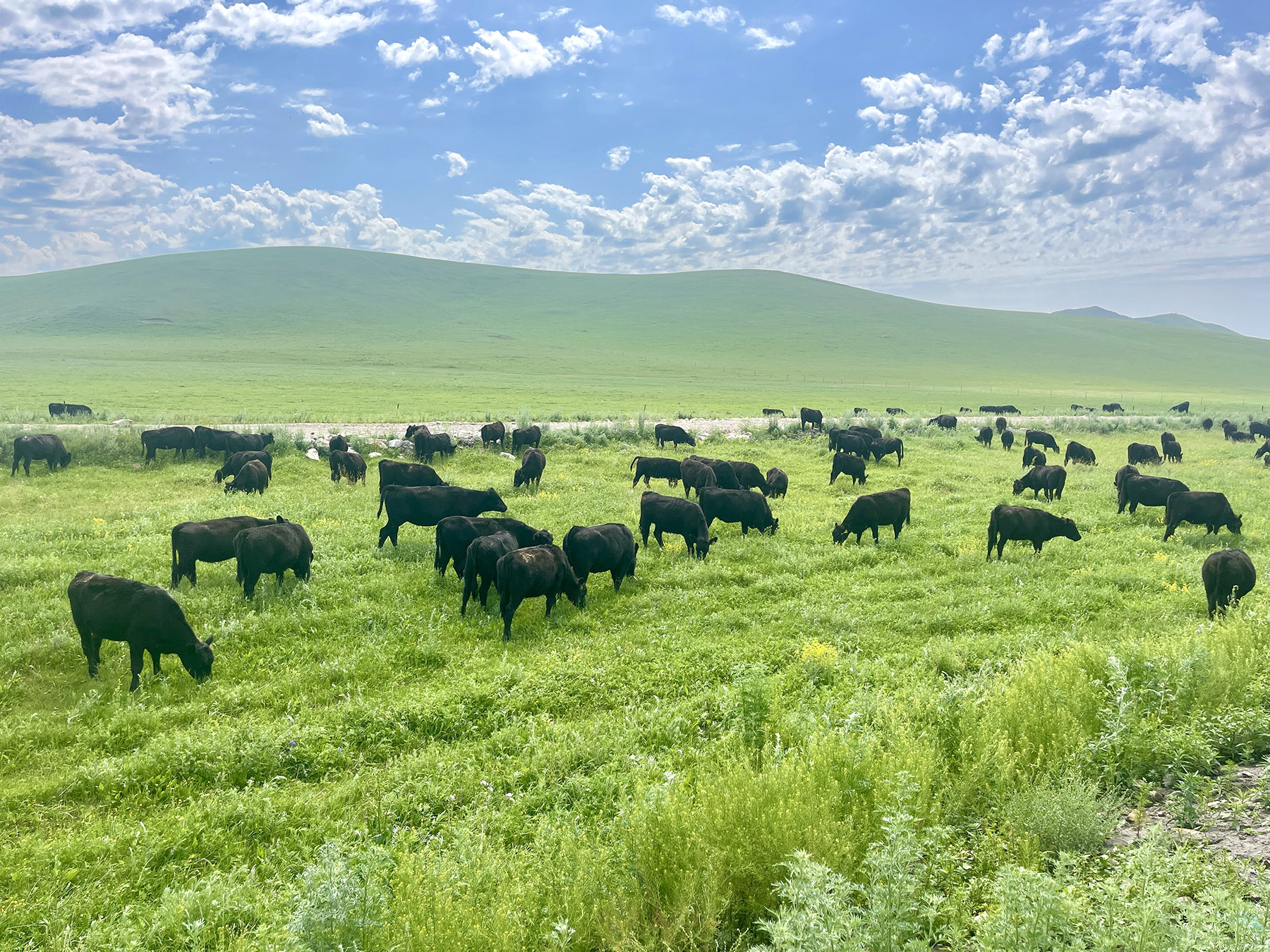
Protecting the future
Ian Lahiffe, founder of a high-tech agricultural company Just Be Cha, headquartered in Tianjin, said the grassland management in Ulgai Grassland is more thoughtful than in many of the countries he has visited.
On 400,000 mu of prairie, only 10,000 cattle graze — a density far lower than in most ranching nations, he noted.
"That gives the land time to recover and allows the animals to live well. It's an eco-friendly approach that supports long-term sustainability," he said.
Lahiffe said the integration of tradition and innovation is key to the grassland's future.
"Herders ride across these plains as they have for centuries, yet companies are helping them adapt to modern markets," he said. Seeing those newcomers bring fresh investment and ideas into the cattle industry, herdsman Dong Xiaohu feels a renewed sense of hope.
ALSO READ: New trade agreement with China sparks optimism in Botswana beef industry
After more than a decade tending cattle on these grasslands, the work has become a way of life he has come to cherish.
While the job demands constant vigilance, especially during spring calving season when the herdsmen have to patrol the herd day and night, Dong said the rewards go far beyond money. "I feel free when I gaze across the endless grasslands and grow attached to the herd," he said.
It's a freedom he never knew in his younger years, struggling to scrape by in the cities.
Here, among the cattle, he has found a sense of peace and purpose.
"I raised some from the time they were two years old until they passed naturally at 13," Dong said.
"They've given me a sense of belonging. Plus, if you're willing to work hard, the rewards come honestly."
Contact the writer at yangfeiyue@chinadaily.com.cn


